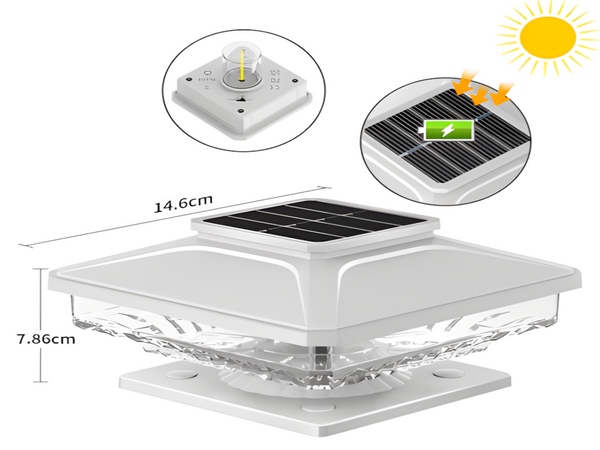
Courtyard Lights
are a type of outdoor lighting fixture, typically under 6 meters in height. The main components consist of a light source, lamp, lamp post, flange plate, and foundation embedment. Due to their function of beautifying and decorating the environment, they are also referred to as
Landscape Courtyard Lights
. Today, we will discuss how to set up
Community Courtyard Lights
.
1. Application Range
Courtyard lights serve as the primary functional lighting for main roads and streets within the community, providing effective lighting to ensure the safety of pedestrians at night. The height of the fixtures is usually between 3 to 5 meters, with an effective lighting radius of 8 to 10 meters. The spacing between fixtures should be around 15 to 20 meters. To maintain harmony with the landscape, lights can be placed beside tall trees without disrupting the overall aesthetic coordination.

2. Selection Requirements
Light Source Selection:
It is not advisable to select incandescent lamps (short lifespan, low light efficiency), high-pressure sodium lamps (poor color rendering), LED (technology for functional lighting is still maturing), or induction lamps (products are still experimental with unverified stability, not suitable for widespread application).
For functional lighting within the community, it is recommended to primarily choose energy-saving lamps that are economical and efficient. The color temperature should be between 3000 to 4200K, with good color rendering (Color Rendering Index greater than 80). The power of the light source should be between 26 to 48W, based on the required brightness.
For street courtyard lights, metal halide lamps are recommended, with a color temperature of 3000 to 4200K and good color rendering (Color Rendering Index greater than 80), with power between 70 to 150W, selected based on the required brightness.
3. Installation Requirements
Point Layout:
Installing lights on one side affects the symmetrical arrangement of landscape features and greenery. Courtyard lights should be arranged symmetrically along the landscape axis or garden paths with symmetrical layouts to enhance the sense of ceremony. If the path is narrow and a symmetrical arrangement seems crowded, it is advisable to use symmetrical lawn lights instead.
Additionally, when determining the layout, care should be taken to avoid placing fixtures directly in front of glass windows in the living rooms or bedrooms of second or third floors, to prevent residents from being directly illuminated by courtyard light sources at night.
Other Issues:
1. Outdoor Cable Selection Issues
BV wire or rubber-sheathed wire should be used as the power supply for the lights. Rubber-sheathed cables are prone to heat aging or melting, risking short circuits or electric leakage, which poses safety hazards. All outdoor lighting circuit power lines must use YJV or YJV22, underwater lamp leads and submersible pump motors must use JHS underwater cables, and outdoor lamp leads can use RVV, while indoor wires should not be used in place of outdoor cables.
The outdoor cable protective pipes should be made of steel pipes, PE pipes, or heavy-duty PVC pipes, and KBG pipes or direct burial of cables (except YJV22) are not allowed. The burial depth of the pipes should be below 0.5m, and when crossing roadways or walls, additional steel pipe protection should be added.
2. Distribution Control System
Each circuit of lights should have contactors and timers, forming multiple control circuits and modes. This not only raises equipment costs but also makes it inconvenient for property management. Based on control mode requirements, four settings can be established: all on (major holidays), partial all on (holidays or weekends), functional on (midnight on weekdays), and energy-saving mode on (after midnight on weekdays), with generally two to three control modes set according to actual conditions. Manual control and timer control should be available, with light control functions added as necessary. Two to four timer switches should be loaded on the control circuit, setting corresponding switch times to facilitate property management personnel in achieving the desired on/off functions with fewer buttons.
For indoor installations, the control components (or the distribution control integrated into one cabinet) should be located in the duty room of the gatekeeper. If a small distribution box is wall-mounted in the duty room, it is suggested to uniformly create a closet room to conceal the distribution box. Large distribution boxes can be installed on the floor, placed in corners.

For outdoor installations, it is recommended to install them discreetly or to treat the shell with colors that coordinate with the landscape. Stainless steel boxes should not be exposed directly in the landscape, as it affects the visual appeal; suggested treatment should match the landscape color.
If you would like more information regarding
Courtyard Lights
, feel free to reach out.



